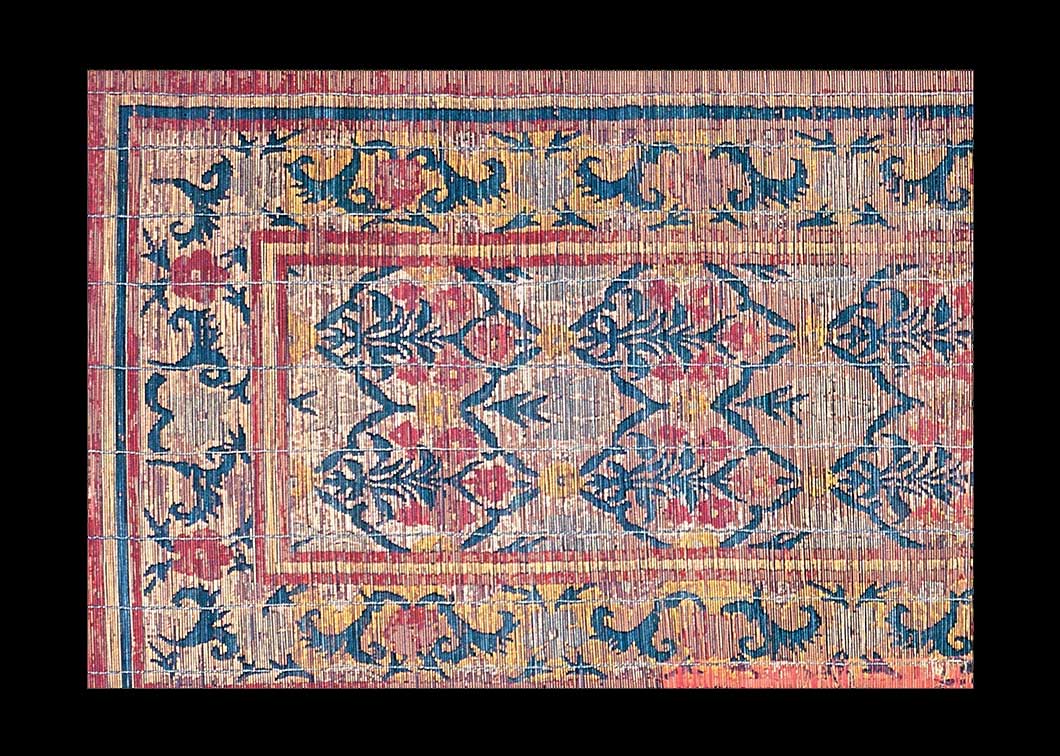
Chik (Bamboo Screen), late 17th to early 18th century
Bamboo reeds and silk thread
Western India
Bamboo screens called chik were once hung on doors and windows of Rajput palaces and tents. The patterns on this screen might appear to be painted but were actually created by hand-wrapping each of the horizontal reeds with colored silk thread to lay out a harmonious high-Mughal scheme of floral cartouches enclosed by a flowering vine. Such screens match the descriptions of Mughal bamboo screens found in 17th-century travel accounts. There is no visual evidence of their use in the Mughal court, although such screens are widely depicted in Jodhpur paintings of the mid-18th and 19th centuries.
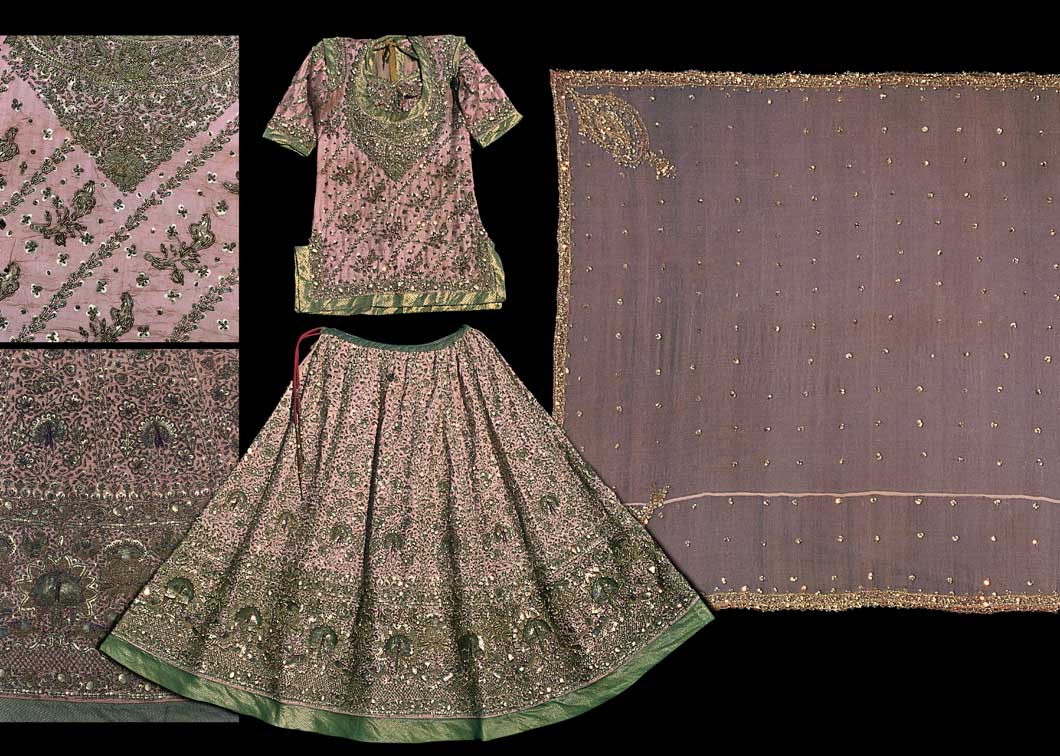
Poshak (Rajput Women’s Ensemble Dress), 20th century
Silk, gilt metal, sequins, and embroidered chiffon veil
Jodhpur
The poshak is an ensemble dress worn by Rajput women. It comprises of a flared skirt or ghaghara, a sleeved bustier called kanchali, a sleeveless blouse, or kurti, and a translucent veil, or odhani. Richly embroidered poshaks of this pearl-pink hue called motia are considered auspicious and have a cooling effect on people. The poshak in its present form was adopted by Jodhpur royals in late 19th or early 20th century. Miniature paintings until the third quarter of the 19th century depict royal women in large flared ghagharas paired with only a single-piece blouse and veil.
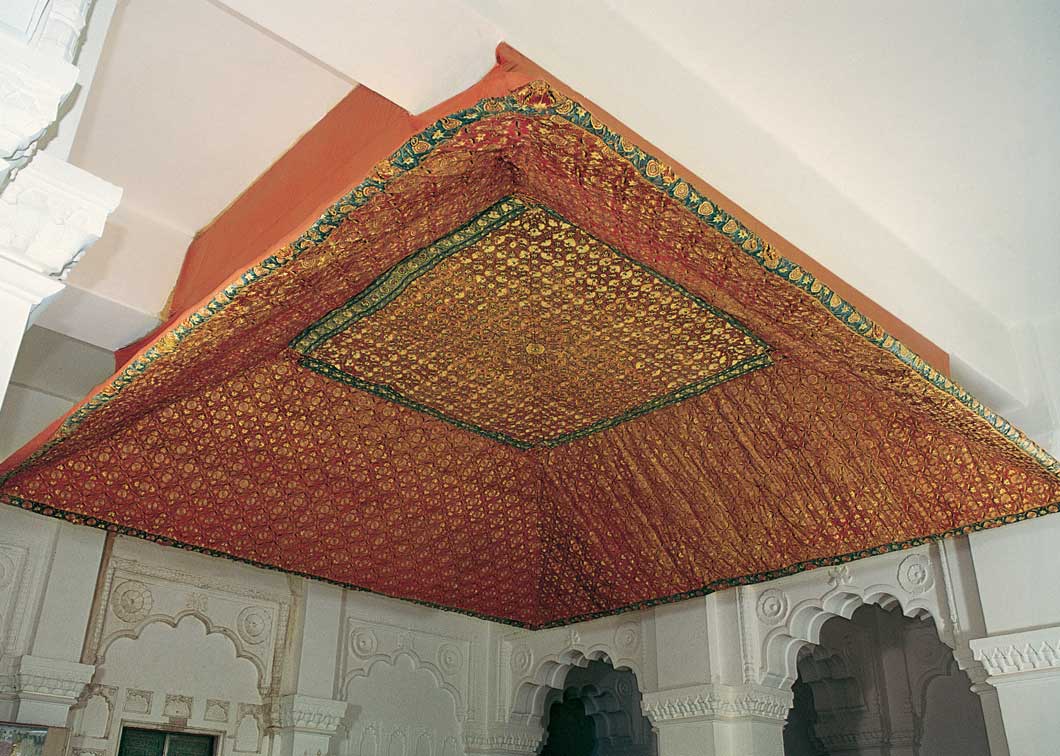
Chhatbandi (Canopy), late 18th century
Silk velvet and silk thread
Western India
This tent canopy of lac-red silk velvet is embroidered in silk thread with a dense arrangement of floral patterns composed of stylized poppies and carnations, among other plants. Such tents and furnishings were not only used as mobile encampments but were inseparable components of the architecture of the stone palaces. Tents attached to metal hooks both extended and embellished built architecture, in addition to protecting inhabitants from India’s extreme weather. They also played ritual and symbolic functions: red tents were reserved for sovereigns, who sat beneath embroidered red canopies during durbars, where they met courtiers and visiting dignitaries.
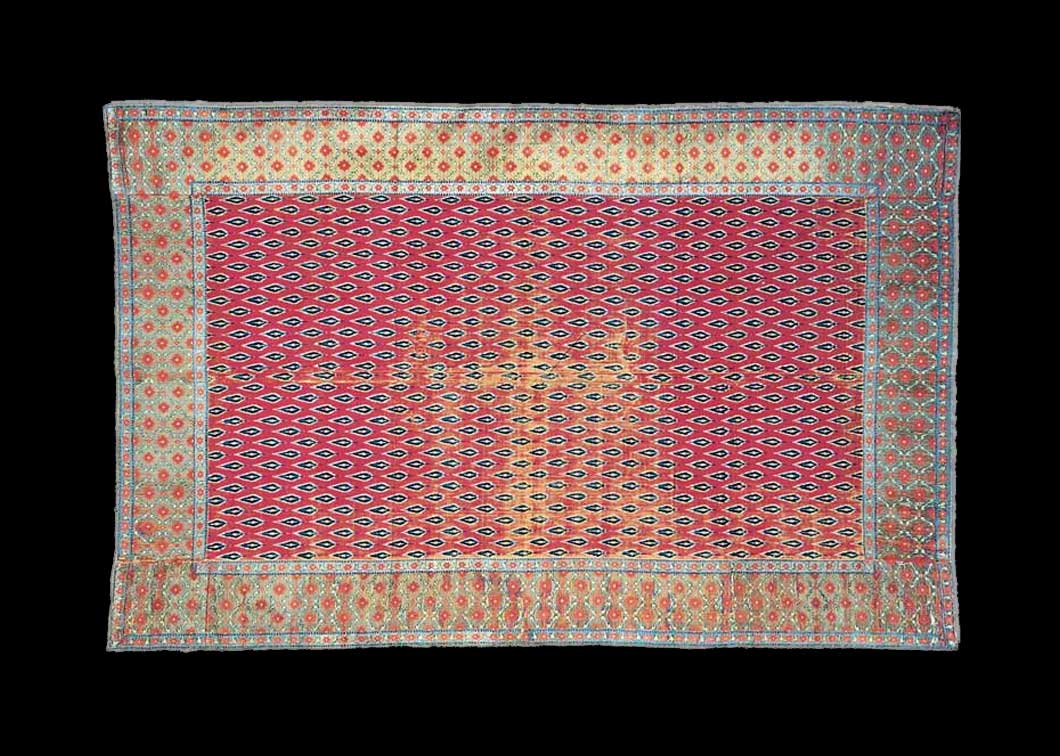
Bichhayat (Floor Spread), early 19th century
Ikat silk-velvet field with woven metal-ground silk borders
Gujarat
This floor spread or bichhayat has a remarkable silk-velvet ikat panel at its center, patterned with cypress-tree motifs in red, yellow, white, and deep blue-green. Ikat textiles are the result of a laborious process through which skilled artisans wrap resist-dye yarns in desired patterns before the weaving begins. Ikat is a Malay Indonesian word now used for a centuries-old textile tradition whose origins are uncertain. Traditional centers of ikat production are spread across central, south, and southeast Asia. The ikat on this bichhayat, likely produced in a workshop in Gujarat, is framed by a woven metal-ground silk border.
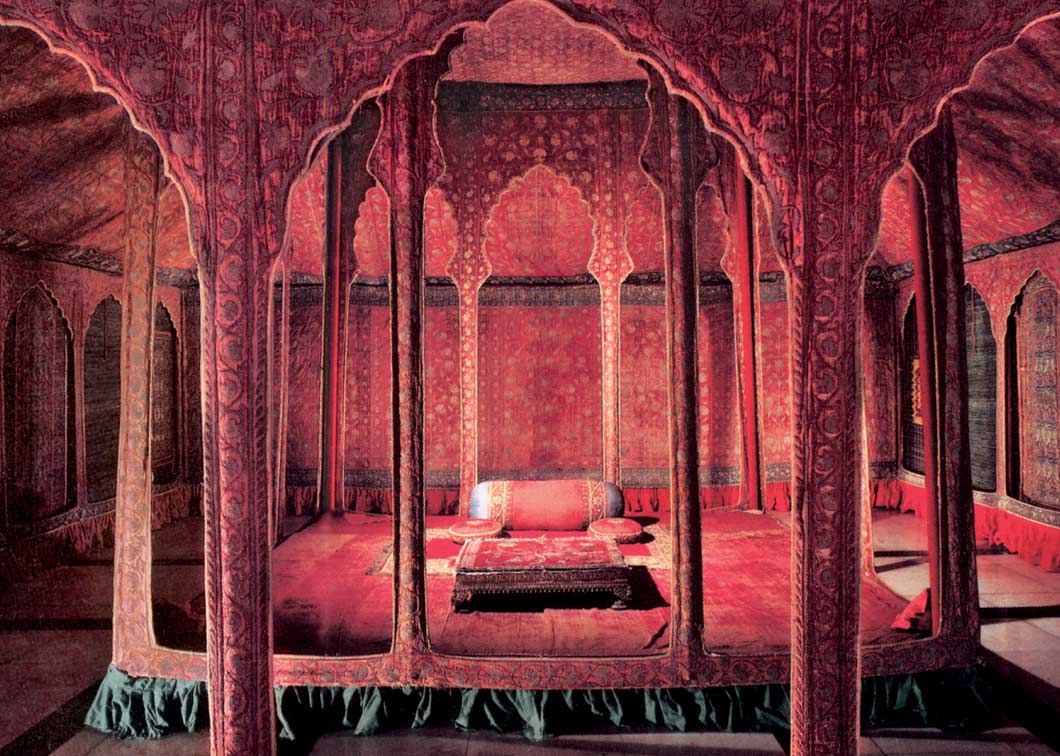
Kanat (Tent Wall) of Lal Dera, late 17th to early 18th century
Silk velvet, silver-gilt thread, and cotton backing
Mughal (probably Ahmedabad, Gujarat)
This canopy and wall belong to the only surviving Mughal tent ensemble in the world today. The Lal Dera (Red Tent) is richly embroidered in red and indigo (now faded to a turquoise). It is said that Maharaja Abhai Singh (r. 1724–49) angered Emperor Muhammed Shah by pitching a red imperial tent at a conference of Rajput chiefs in 1734. Square in plan, arched colonnades carve out an inner chamber, the size of which indicates that it was used for private audiences with the ruler. Similar tents were erected for rulers in encampments to match the splendor of royal residences during military campaigns.
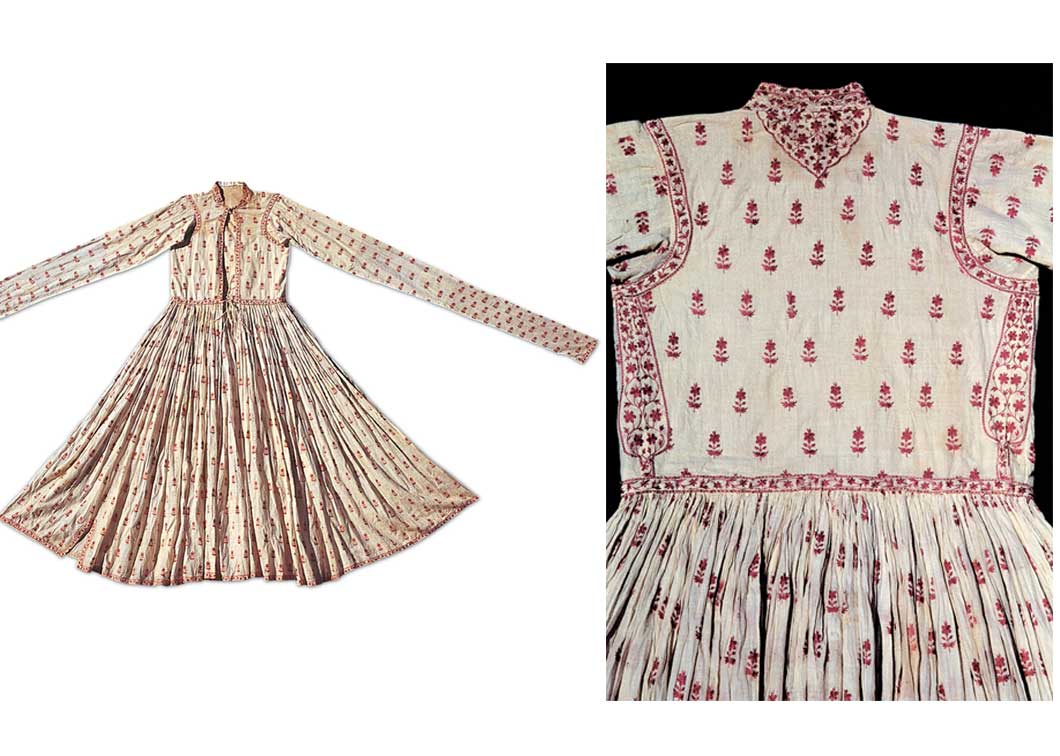
Angarkha (Man’s Robe), late 18th century–early 19th century
Embroidered white cotton, and silk thread
Western India, probably Gujarat
An angarkha is a flared robe commonly worn by Hindu nobles, royals, and wealthy merchants. This muslin angarkha is covered in delicate chain-stitch embroidery, creating a field of wine-red flowering plants edged by elegant floral vines. Between the 16th and 18th centuries, superbly fine chain-stitch embroidery was known to be the specialty of embroiders from the Kutch region in Gujarat. In general, the distinguishing feature of an angarkha is an elliptical chest opening with an inner flap. This angarkha, however, has an atypical vertical opening on its chest. Similar garments are seen in Jodhpur miniature paintings starting circa 1720.
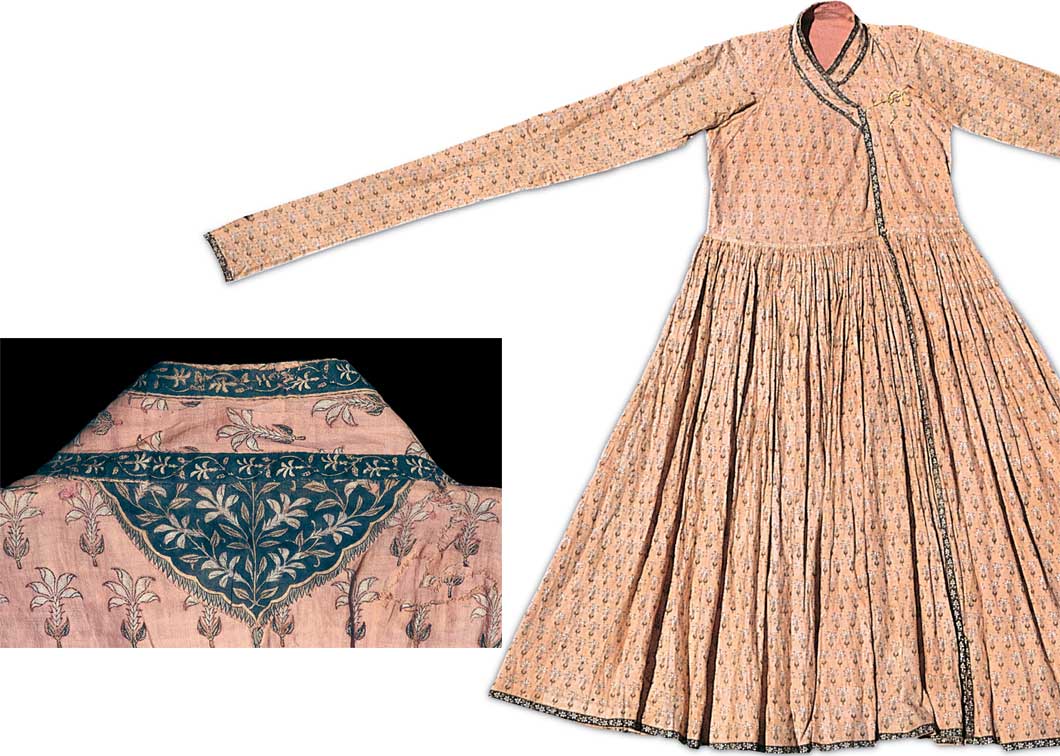
Jama (Man’s Robe), early 19th century
Block-printed cotton
Rajasthan
The term jama—Persian for garment—referred in medieval northern India to knee-length robes whose flared skirts were amenable to horse riding. Jamas paired with silk sashes and fitted silk pants were the standard attire of the Mughal court and were adopted by Jodhpur’s rulers. Through the 1800s, the jama in Marwar grew in length and flare, resulting in ankle-length robes such as this one, likely from the time of Maharaja Man Singh (r. 1803–43). The salmon-pink fabric was block-printed or hand-painted with floral stalks by a master craftsman as evidenced by the exquisite rendition of details and the harmonious, fluid placement of repeating patterns.
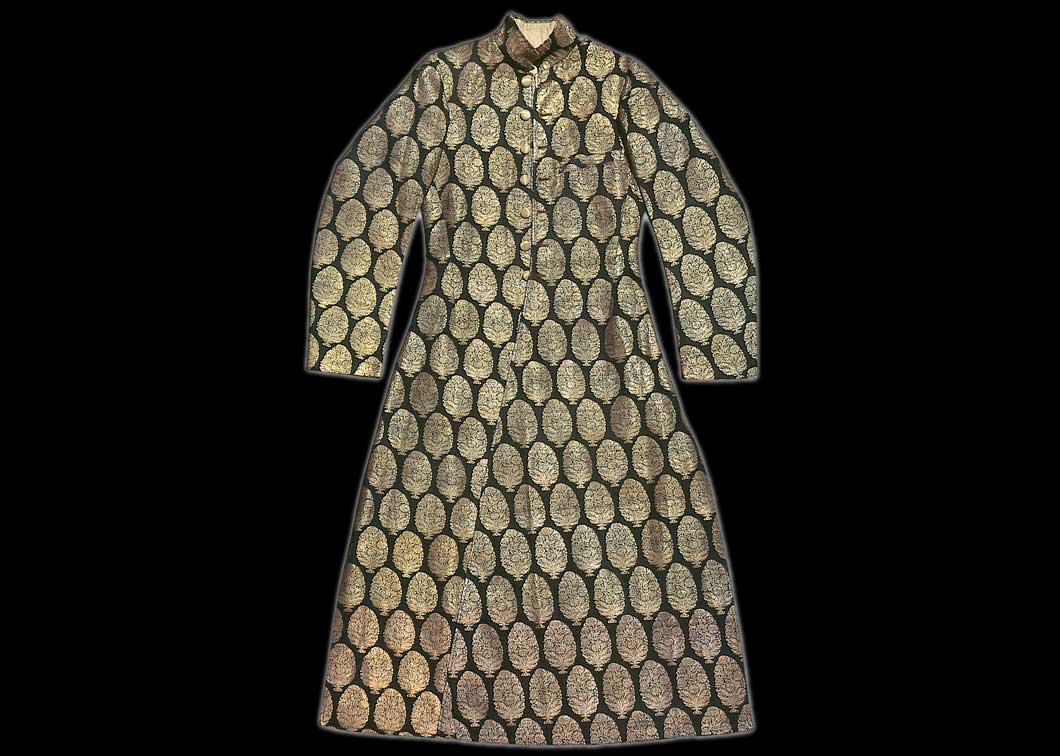
Sherwani (Man’s coat), late 19th century
Woven silk (Gujarat or Deccan)
Jodhpur
The Sherwani is a fitted, buttoned-down ceremonial coat that came to be adopted as formal wear by Jodhpur’s Maharajas in the late 19th century. Sherwanis made of thick Indian and imported silk and wool replaced translucent, billowy jamas and angrakhas that had evolved from Mughal costumes to become court fashion in Jodhpur by the 18th century. This silk sherwani made for young prince is stitched from Gujarati or Deccani silk brocaded in oval plant patterns known as ‘buta’.
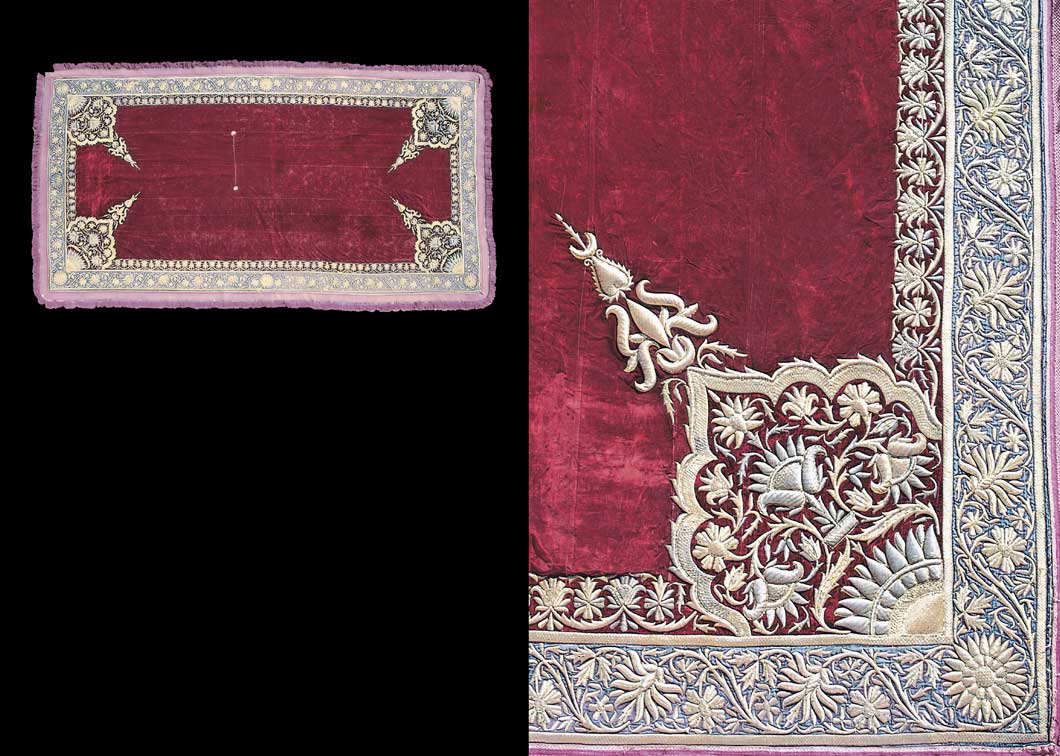
Jhool (Elephant cover), late 19th century
Silk velvet, silver gilt thread embroidery; cotton frills
Jodhpur or North India
During ceremonies and processions, royal elephants were adorned with textiles and jewellery. The jhool was draped under the howdah (elephant seat) placed on an elephant’s back.
This jhool is composed of a panel of luxurious wine-red silk velvet set off by a light-blue velvet border with fringes. It is richly embroidered with floral scroll borders and corner cartouches rendered in gilt metal thread and sequins.
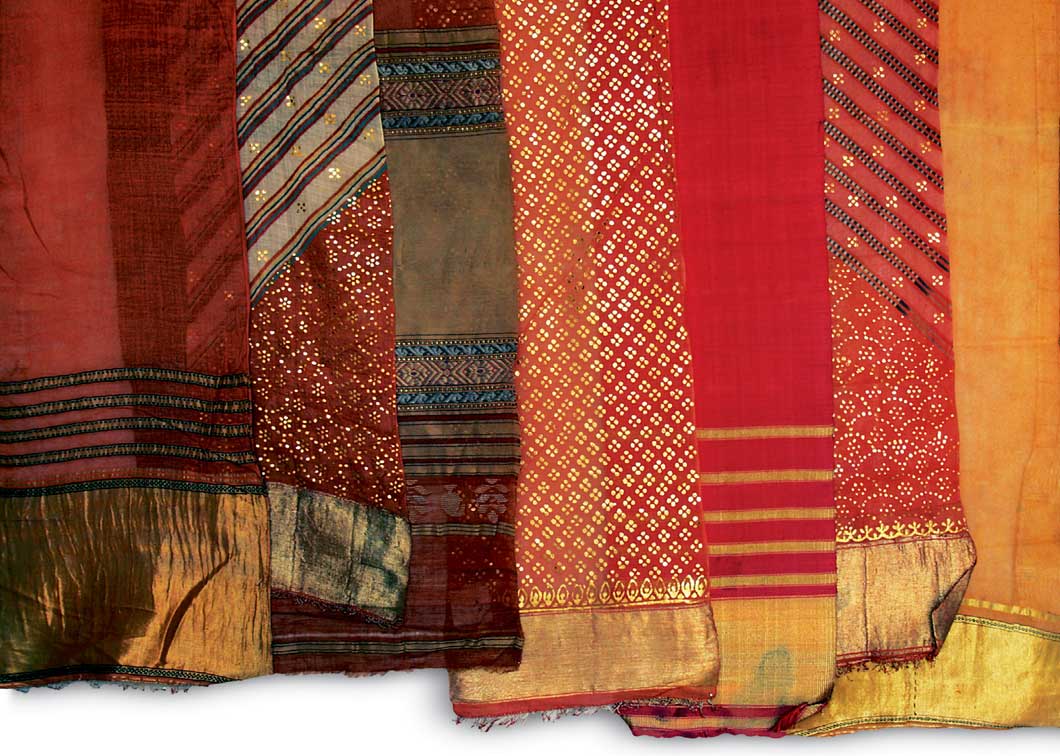
Paags of Marwar (Turban cloths), early 20th century
Cotton with brocade border, and gold
Jodhpur
The paag (turban) is a headdress that is wrapped or worn around the head by men in Rajasthan. Synonymous with a man’s identity, the paag is a powerful symbol of pride and valor in Marwar. Every social group in Marwar has a distinct style of tying the turban that is akin to an unspoken language. The colors and patterns of turbans are also associated with seasons, rituals and ceremonies, moods, and emotions. Yellow is the color of spring and happiness. Saffron denotes renunciation. Leheriya, or the wave pattern seen in the turban cloths from the Mehrangarh collection, is a symbol of rain and worn in the rainy season.
